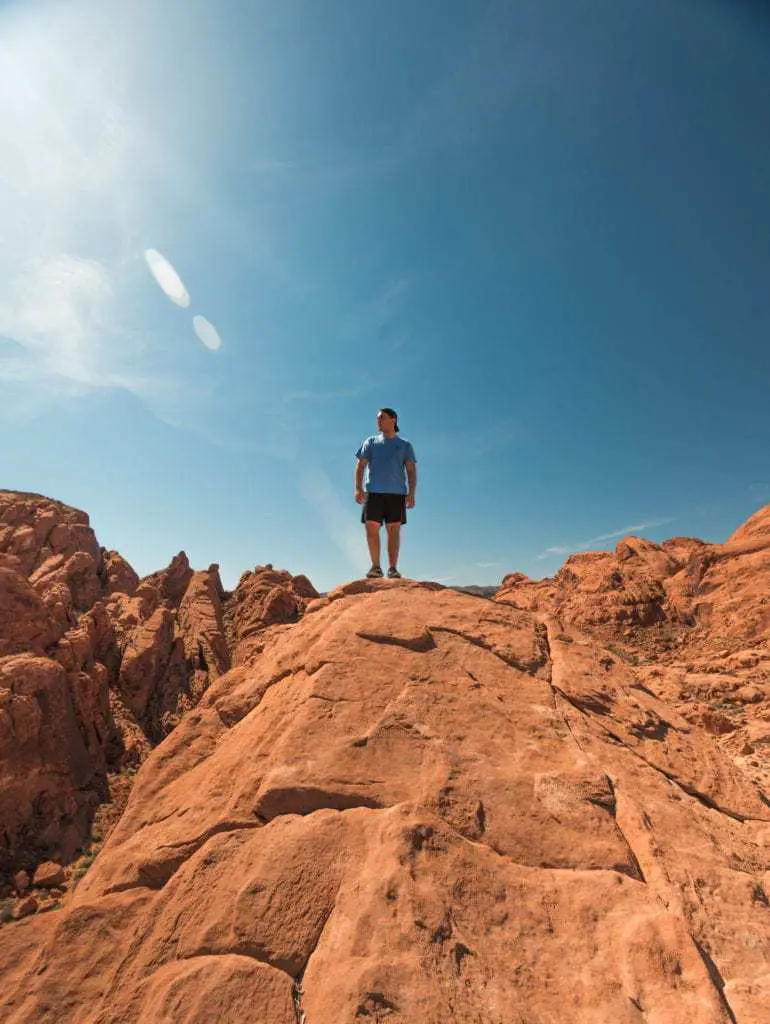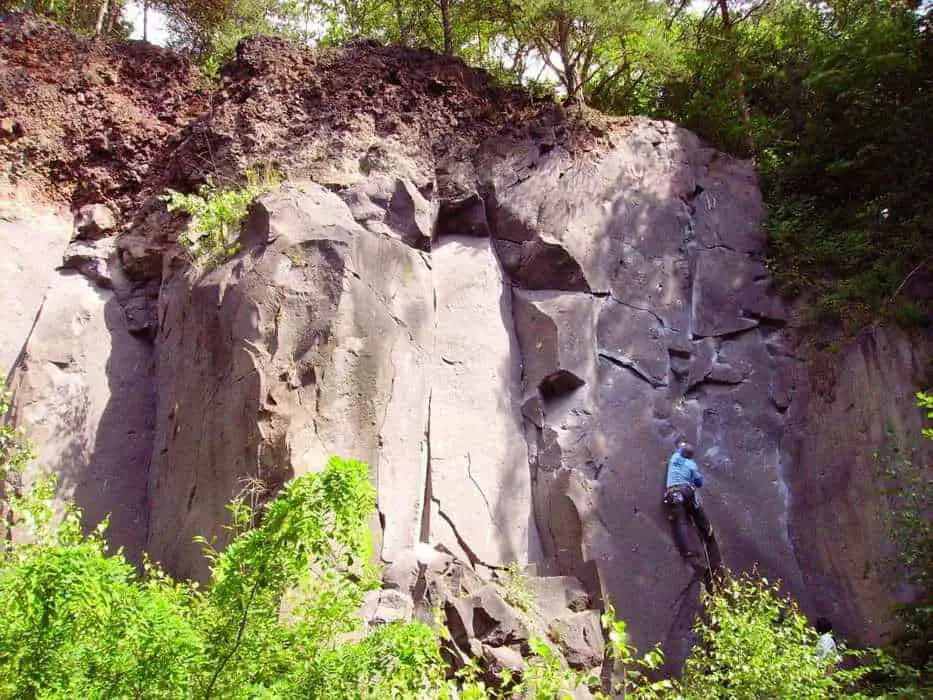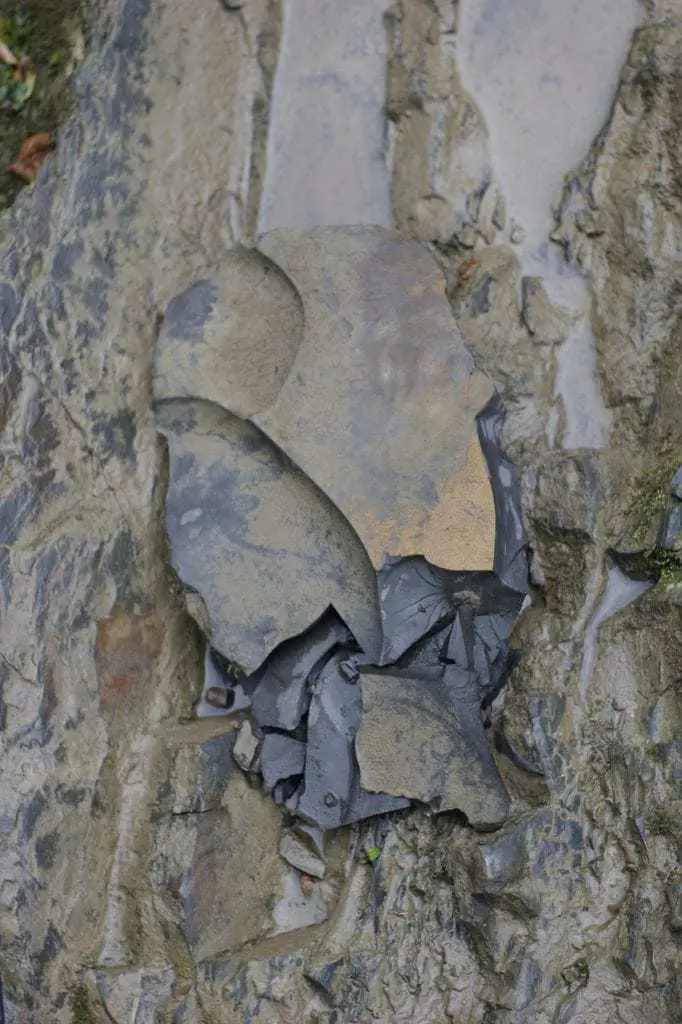
When you’re rock climbing outside in multiple locations, you may notice one type of rock has different attributes to the other. This is because different rock types can be sedimentary, igneous, or metamorphic. Because of this you may find that you can’t climb as well on one rock as you can the other, or that one rock is easier to climb in a certain type of weather condition. Some rock types are easier to find because they are more common than the others. I’ve written this article to tell you about the different rock types for climbing that you can find around the world and what each of their attributes are.
So, what are the different rock types for climbing? Granite, sandstone, basalt, quartzite, and limestone are 5 different types of rock you can find for climbing. They all have different qualities and properties when it comes to climbing.
- Granite climbs can be extremely good for climbing or very painful and are made from igneous rock. They often contain cracks, while having smooth slabs of rock due to weathering from wind and rain.
- Sandstone climbs shouldn’t be climbed when (or just after it’s been) raining and are made from a sedimentary rock which usually means there’s going to be quite a bit of friction involved. Sandstone climbs typically involve a few cracks.
- Basalt is an igneous rock that is usually good for crack climbing and bridging up grooves.
- Quartzite climbs usually contain nice holds, and are perfect for the adventurous trad climber.
- Limestone climbs shouldn’t be climbed when it’s too hot/sunny due to sweaty hands and are very technical because the holds are usually polished due to its formation.
If you want more information on each type of rock, or you want to know the differences between igneous, sedimentary and metamorphic rock then keep reading. I’m going to go into a lot more detail in this article which should hopefully help you understand what each rock type means when it comes to climbing.
Page Jumps
- The Differences Between Igneous, Sedimentary, and Metamorphic Rock
- Granite Rock for Climbing
- Sandstone Rock for Climbing
- Basalt Rock for Climbing
- Quartzite Rock for Climbing
- Limestone Rock for Climbing
- Related Questions
The Differences Between Igneous, Sedimentary, and Metamorphic Rock
Before we start talking about the different rock materials that are typically climbed on, it’s good to know about the three types of rock that explain how they are formed.
Igneous Rock
Igneous rock is formed when liquid magma cools and can either be intrusive or extrusive. Intrusive igneous rock cools below the ground which usually means it cools down quite slowly therefore allowing the creation of crystals (e.g. granite). Extrusive igneous rock is lava that has cooled down on or near the surface of the Earth. When it’s extrusive, lava will cool down a lot faster and therefore will not result in the creation of crystals (e.g. basalt).
Sedimentary Rock
Sedimentary rock is created when the accumulation of tiny minerals and sediment is very tightly compacted. There are many different types of sedimentary rocks, the most common being sandstone and limestone.
Metamorphic Rock
Metamorphic is a type of rock that was once very different and has been changed from its original igneous or sedimentary characteristics when a large amount of heat, pressure, or hot mineral-rich fluids (or a combination of the three) have been applied. Quartzite, gneiss, and marble are types of metamorphic rock.
Granite Rock for Climbing

Granite is a type of igneous rock and is the most commonly climbed rock on Earth. Generally, it depends on the type of weathering that the particular granite climb has had as to how slippery or easy to grip the holds are.
Granite can either be slippery due to the wearing down of the rock by water and/or wind, or it can be quite rough when found on certain mountains, which may also mean that it’s crumbly with big, solid crystals. Therefore granite can either be very slippery or very grippy. The big, solid crystals may also be crimpy and sharp which means they can be painful to climb on; but as discussed, granite can either be extremely sharp or slippery. The characteristics of granite can change depending on the country you’re in, for example in the UK you won’t usually find rough granite, however in the USA you’ll probably find more sharp, painful granite climbs. It’s found in some popular climbing locations such as Yosemite Valley and Longs Peak.
Many climbers don’t like to climb on granite because of how much pain it can cause. I have heard stories of people losing all the skin off their knuckles just from scraping it on the rough crystals.
Sandstone Rock for Climbing

Sandstone is a sedimentary rock which is commonly climbed around the world in places like the UK, Czech Republic and the USA. Sandstone is easier to climb in dry conditions. Trad climbing isn’t recommended on sandstone because of how delicate the rock is. This is why sandstone is perfect for bouldering and top-roping.
Climbing on sandstone when it’s wet due to rain can actually damage the holds, therefore ruining the route. The holds can literally crumble away. Sandstone absorbs water because of how porous it is, ruining the composition of some materials within it such as clay, silica, and iron which holds the rock together. It’s important to note that although sandstone rock may look dry on the surface, if it’s been raining heavily recently it could have soaked up water underneath and still be a bad idea to climb. This is why it’s better to climb sandstone on a dry day with a moderate temperature – the dry conditions are perfect, and it also makes for a nice day out.
Basalt Rock for Climbing

Basalt is a form of igneous rock and can either be very good to climb on or it can provide climbs that aren’t suitable and can actually be quite dangerous. The difference between the two is found in the chemical composition of the rock and/or the weathering that the rock has been through.
When it’s suitable for climbing, basalt columns can be a crack climbers paradise or a place to practice your bridging technique on the grooves.
As it’s typically an extrusive igneous rock, basalt has a different composition to granite due to the fact that granite has a dense crystalline structure. Most climbers prefer to climb basalt, but there aren’t as many areas around the world compared to granite.
Quartzite Rock for Climbing

Quartzite is the only metamorphic rock on this list, and is probably the most commonly climbed metamorphic rock around the world. It’s made when intense heat or pressure is applied to sandstone. It’s very unique for its climbing characteristics, providing some very easy to more advanced routes with holds you can only dream of having on other types of rock. It often deceives the climber from below as the holds can sometimes look more difficult than they actually are once you’re up there. Although the holds may be surprisingly easy, some of the route may require balance and cautiousness. Quartzite is perfect for the trad climber who’s looking for adventure and can be found in countries such as Morocco.
Limestone Rock for Climbing

Limestone is a sedimentary rock that’s been formed underwater by sediment along with skeletal fragments of organisms such as molluscs and coral. It’s more difficult to climb than most of your other rocks, which is why someone who can complete a V5 on granite might want to consider dropping their grade a couple of notches when they climb on limestone. The holds are a lot more tricky – less crimpy and more polished.
Limestone may contain climbs that are full of small footholds and very few handholds. Therefore you must focus on having accurate footwork if you don’t want to fall. You can obviously train for this on small foothold climbs at the local climbing gym before you climb on limestone.
It isn’t advised to climb on limestone when it’s hot and/or sunny because you don’t want the rock to be warm. This creates the perfect conditions for sweaty hands which is the worst thing when it comes to polished holds. Colder and dryer conditions are considered to be better when climbing limestone.
Related Questions
Does limestone turn into granite? If exposed to a high amount of heat or pressure, limestone can turn into marble and granite can turn into gneiss. So, no limestone does not turn into granite. Interestingly sandstone can turn into quartzite. Quartzite, gneiss, and marble are all types of metamorphic rock.
Can you climb limestone after rain? It is not advised to climb limestone in wet conditions because of how polished the holds are. You should wait at least 24 hours after it’s been raining to climb limestone.
